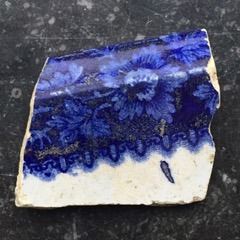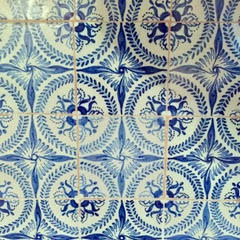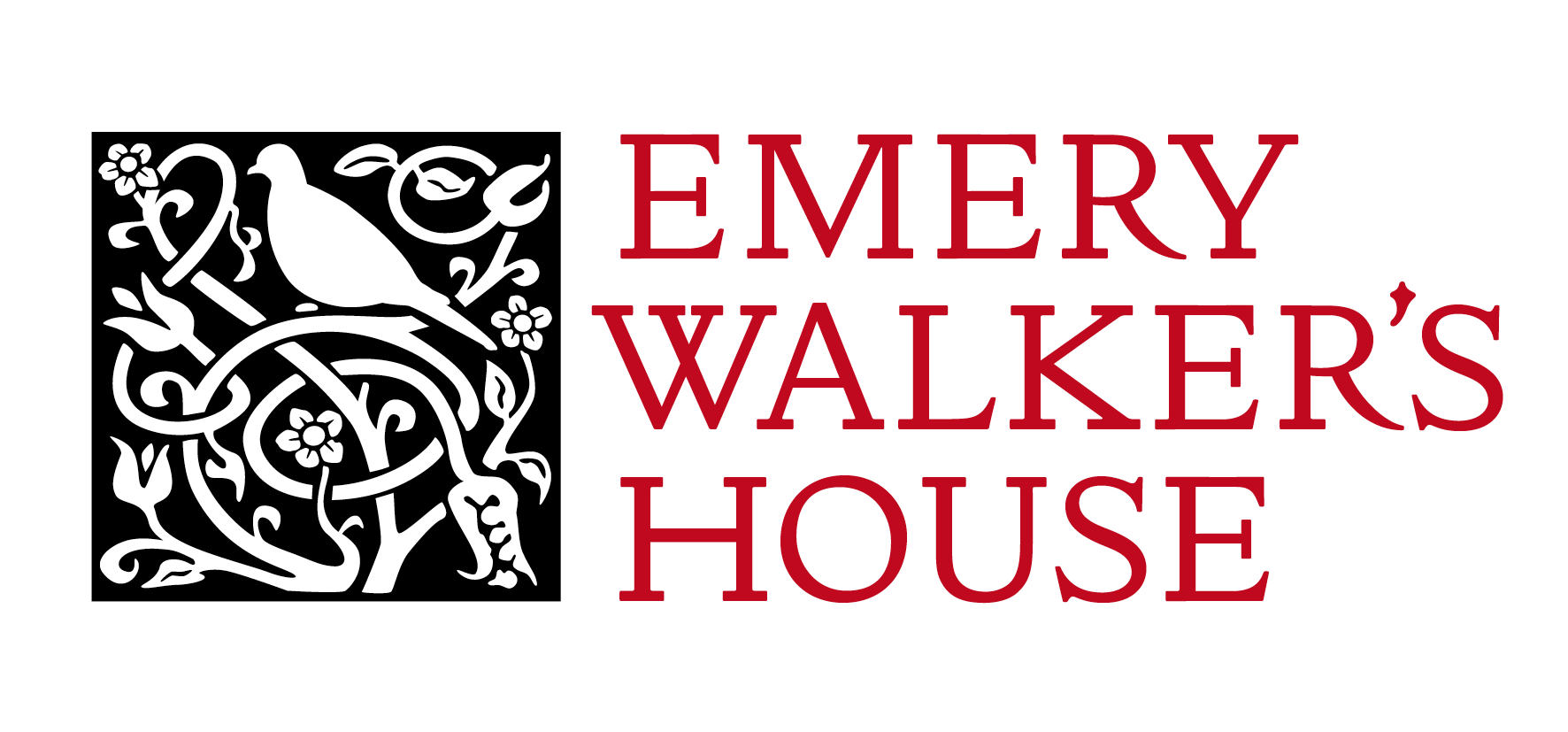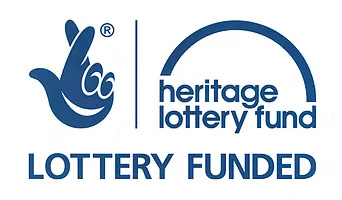It was a Thursday, we had just come off the Eurostar from Bruxelles for six days in London, and we seized the moment: ”Kelmscott is open today, wo-hoooo”. Straight off on the bus to Hammersmith.
We found a very cool Brutalist town hall and a nice Polish café. And a Pooh-ish smackerel it was time for 26 Upper Mall, a magic address. Reaching the river, just when the sun broke through, was the journey’s best moment. Ebb. A rowing team was training at the beach. Morris used to watch the boat races. We stepped down to the river bed, got mucky, but totally happy in that ”evil-smelling black mud at low tide”, as described by Greville MacDonald, a former resident at Kelmscott House, or ”The Retreat” as it was called before Morris’s time in the house. Not so much evil stink this day, but muddy indeed. We wiped the worst of it from our boots, have to look respectable, but some spots of the Thames mud was later to travel to Sweden as a dusty remainder. I hope some small parts of it remain and I’m not going to brush my shoes too well, ever.


I looked for something, a souvenir of some kind, and suddenly found – YES – a porcelain shard, blue-white and perfect.

I imagined how Morris in one of his frustrations threw a plate in the river sometime in 1882, and here it was now in my hand.
And then: the house. The Morris family moved here in November 1878. I think we saw the current owner, an older man working away with something at the entrance. That entrance, flanked by Morris’s two rooms at the ground floor, the study to the left of the entrance, the bedroom to the right. I always thought that the garden was facing the river, but it is the other way around. I later learned that the A4 cut the Kelmscott garden in half sometime in the 50’s or 60’s I guess, and that there was a bomb crater in the back garden in the 40’s. A second later or earlier in a German bomber should have annihilated the house, but they missed. Before Morris, George MacDonald lived here, who wrote The Princess and the Goblin in this house, a book that inspired Tolkien, who was also inspired by Morris fantasy sagas, also written at Kelmscott House.
Things come together here, in this ”convenient and seemly shelter from the weather, a place to keep books and pretty things in”, as Morris wrote. His daughter May claimed though, that Morris never felt it was his real home. It was ”not a house that he had great emotional investment in”, claimed Fiona MacCarthy in her biography. Well, nothing could of course match The Red House, which Morris with his rising income surely could have bought back, but didn’t. He never returned there. His heart lay more in Kelmscott Manor in the Cotswolds, and the river became an important emotional passage for Morris. Knowing that the same water that flowed by Hammersmith had passed the Manor further up the river was comforting and inspiring. It was this important stretch upstream that was the geographical and educational journey in News From Nowhere. ”How do we live in the future?” was the question Morris must have asked himself many times in this house, with this view over the river.

We stepped into the former Coach house, a room for horses, then carpet looms, then the Hammersmith socialists and the Sunday evening lectures. Oscar Wilde was here and Lewis Caroll, Bernard Shaw, May Morris, H.G. Wells and W.B Yeats and a long list of socialist thinkers, speakers and followers. A young man was sitting guard, ”Hello there”. We checked the exhibition, interesting, and then the lower rooms, in search of a bearded ghost called Morris. It should be here somewhere in the corners, muttering over a dusty vellum covered manuscript. We found souvenirs for sale, books, a most beautiful fireplace, here the ghost was near. A shy ”hello” to the staff was all I could manage at that moment. As the only – I think – Swedish member of the society I should, of course, have introduced myself, but I didn’t. Visiting incognito, I know, it’s rude, but you can’t imagine the magnitude of my shyness visiting, at last Kelmscott House, that I have read and fantasised so much about. My wife Maria told me to say hello properly – “of course” – but I resisted, wanted to be just one in the crowd that day.
I was not the first Swede in the house. In 1892 a man called Erik Folcker visited Morris here. Folcker was at that time a well-known art historian, aesthete and Arts and Crafts enthusiast in Stockholm. He wrote what I believe is the first report in Sweden on the William Morris phenomenon. ”This love of the nature and of a simple, natural life, you understand even better, when you have seen him walking around in his garden by the Thames river, studying old Islandic sagas, printing his own books with types and paper taken from the first classical times of book printing or when you read his latest book, News from Nowhere, about the future of England, the most beautiful of socialist dreams, where all human beings are brothers and the Thames flows silvery between London’s flowering meadows and shady groves”, he wrote somewhat romantically. Visitors were often enchanted by Morris. Folcker also bought and ordered goods from the Morris shop, to sell in his small, short-lived and now legendary boutique called Sub Rosa in Stockholm.

Most fascinating was the Albion Press, an actual one, and the accompanying film showing the printing procedures. And all the small things, the beautiful clutter of left overs, letters, tools, here we were close to Morris and his time. How did they manage to print those fantastic books, without going totally mad? The wonder of handicraft. The toil and the total happiness of work.
We bought some small items, nice cards printed at the press, and left, leaving our names.
We walked from Kelmscott House, resisted the cosy lights of The Dove, and passed Furnival Gardens. Now we had a new place in our hearts, a very special little place, a former ”labyrinth of slums”, now a Mecca for Morris pilgrims. A dark evening fell over the Hammersmith flyover and the city glittered it’s best. Time for tea.
The small but very good book, A History of Kelmscott House by Helen Elletson (William Morris Society, 2009) is strongly recommended.
Petter, a Swedish freelance writer, musician and author is far too modest to mention his own book, but recently has had the one shown below right published on the Swedish ceramic designer, Gunnar Nyland. You can find out more about it here.







